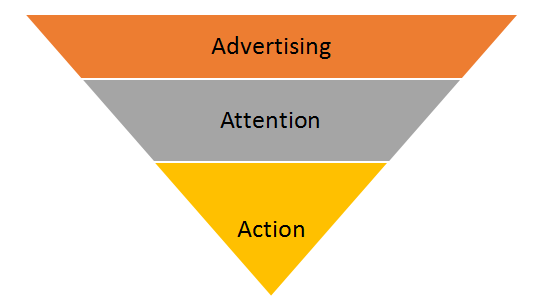Beautifully designed things trigger emotions that are hard to replicate.
Think about it.
Great design might not be the primary consideration, but it does influence purchase behavior. This applies for everything from expensive purchases such as jewelry, cars, even vacations at resorts to everyday items such as coffee mugs.
Good graphic design attracts attention. Big brands spend hundreds of thousands of dollars every year creating and then promoting their business through graphic content. Why do they spend so much? Because attention is everything.
The good news is that you can level the playing field if you’re a small to midsized business owner or marketing manager by using infographics in advertising.
Understand that attention is everything
A big component of successful marketing is distribution. On average, billboards downtown cost exponentially more than their suburban counterparts. Businesses pay a premium for these billboards because they garner more attention.
Of course there are many other considerations but when you break it all down this is what you’ll get.

The stakes (amount of money you have to spend) online are extremely low. With a few hundred dollars, you can have a great infographic created.
Then comes distribution and promotion.
Here’s where you can really win because bigger businesses with deeper pockets don’t have an edge.
How to use infographics in marketing
The use of infographics in digital marketing is not a new technique. However, most marketers that use infographics end up using them ineffectively.
1. Plan for success
The first thing that you need to do is come up with a strategy.

How many infographics will you create and advertise? What will the infographics be on? How will you evaluate success?
Consider these and other questions before you move on to the next step.
2. Creation of infographics
This is the easiest step if you’re a CDP customer. Log into your client area and share the details you have in mind. We’ll communicate a tentative deadline for the first draft.
Review the draft once you get it through email or your client area, and provide us feedback if needed.
It’s really that simple.
Think you would get better results with a flyer? You just might. Check out our flyer writing and design service.
3. Distribution on many platforms
Bottom line is that you want to publish your infographics on as many platforms as possible. There are obvious gains when you publish on all of them at the same time, but you should also consider pacing your marketing by creating a long term plan.
Some of the websites we recommend are:
- Visual.ly
- Fast Company
- Flickr
- Infographics Archive (paid)
- Daily Infographic (paid)
- Infographic Journal (paid)
- NewsILike (paid)
4. Tell the world through promotion
Step your hustle up on in this step. Great content has the potential to bring results, but it needs to be seen in order to convert to results.

In the distribution step, you published the infographic on a number of great platforms. If that step was done correctly, you should already have some pretty good response. To get even better response, we recommend:
- Create an email campaign for your websites subscribers
- Promote the infographic on Facebook, Twitter, Instagram, and other social platforms
- Publish the infographic on your blog
- Let people embed your infographic on their pages
- Use paid advertising to boost results on Facebook
- Connect with influencers and ask them to share (you might have to pay them)
- Repurpose the infographic with new text after a few months
Setting expectations and tracking results
Infographics are a great visual tool that helps create awareness and drives sales, but they’re not a substitute for graphic ads or ad copy. People that read infographics expect to learn through a combination of statistics and compelling graphics and content.
Make sure you track results through your admin account on Google Analytics. Figure out where traffic is coming from and then make it a point to repurpose the infographic for that platform a couple of months later. If your budget allows it, we recommend that you create more Infographics for your top performing platforms.
It’s recommended that you add infographics to your marketing mix, but don’t let yourself become a one trick pony. Add services such as blog management or content marketing to cast a wider net and reel in a lot more sales!
Have any questions? Want to see some samples of infographics? Call us toll free or start a live chat – we’d love to hear from you!
